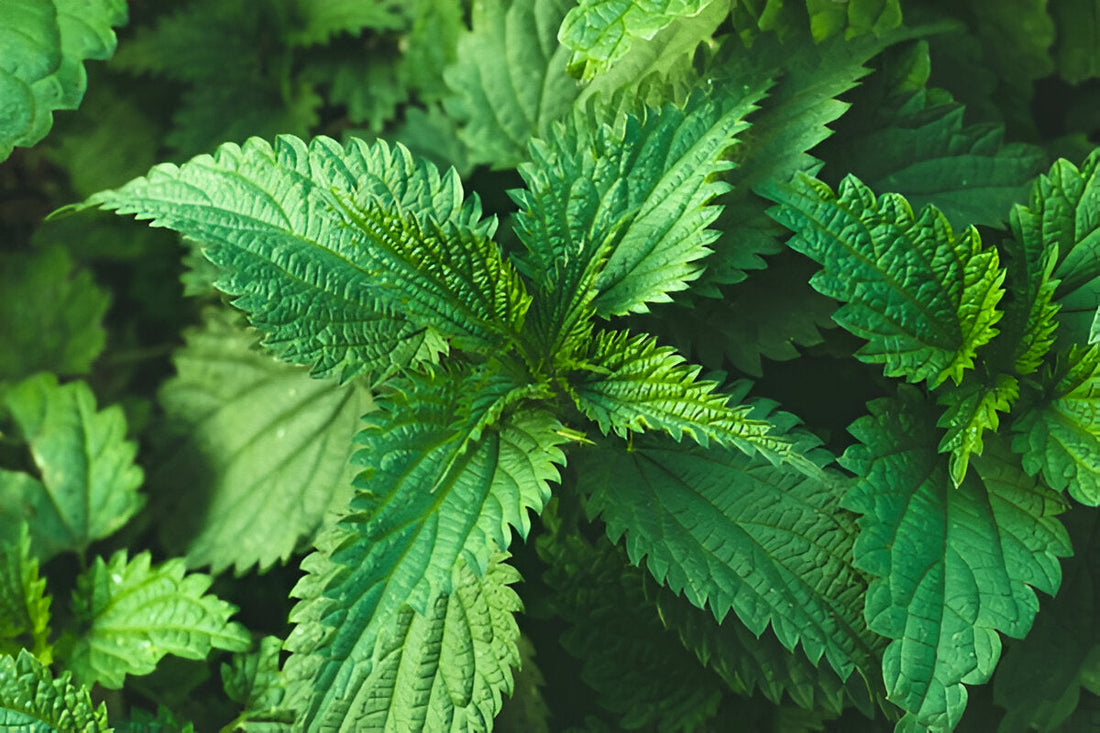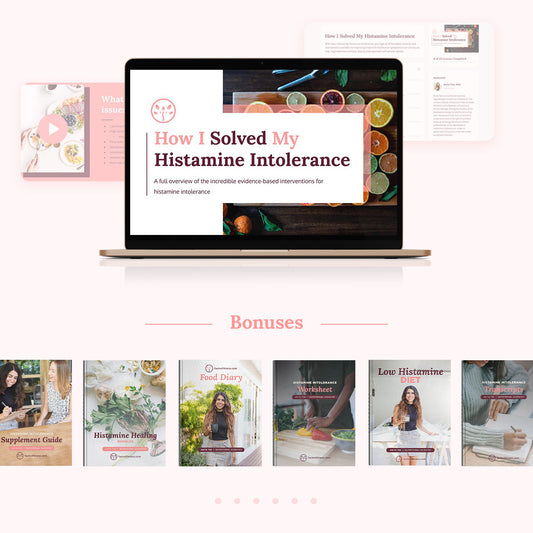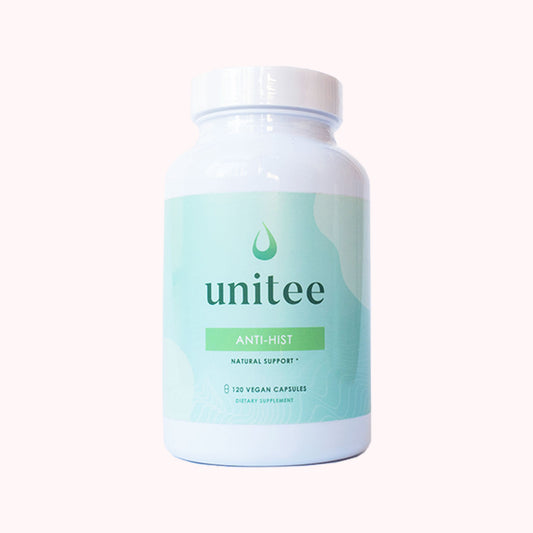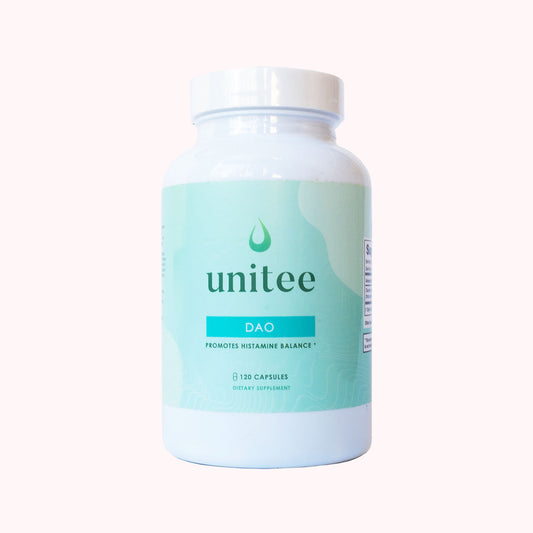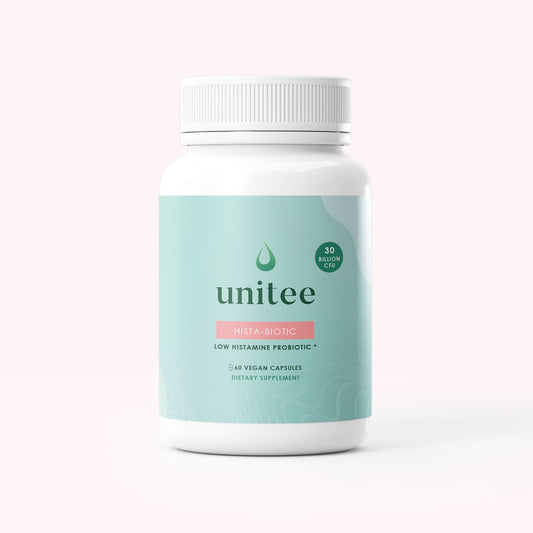What picture comes to mind when I say the words itching and swollen eyes, runny nose, sneezing, skin breaking out in hives, wheezing and coughing?
That’s right! The image you conjure up in your mind is most certainly one of someone who is suffering from severe allergies. Maybe it’s even an image of yourself! Because these are symptoms you likely have to deal with most days - if not every day - when you’re living with histamine intolerance.
Not only are these symptoms of histamine intolerance bothersome, they can be downright debilitating. The trouble is, they’re also not often well controlled by your traditional anti-allergy medication. Despite popping pills, you’re probably still left with a handful of symptoms to deal with.
Fortunately, nature has provided us with a power nutrient that might just do the trick. Instead of blocking just one process associated with allergic reactions like the pills do, this herb has been shown to target the root cause of allergy triggers.
Today, I’m going to introduce you to stinging nettle. An antihistamine power nutrient I would highly recommend you have in your toolkit to beat those allergic responses associated with histamine intolerance.
Stinging Nettle: Antihistamine With a Long History of Anti-inflammatory Uses
While most of us would rather avoid coming into contact with stinging nettle for obvious reasons, for years, this prickly plant has been traditionally used for a variety of medical ailments from gout and arthritis, to diabetes, heart problems, anemia and more due to its potent anti-inflammatory effects.
The anti-inflammatory effects are delivered through a number of mechanisms involved in modulating enzymes associated with swelling, heat and pain in the tissues after injury. The typical molecules you’ll have likely seen mentioned in this regard are called cyclooxygenases (COX-1 and COX-2) and prostaglandins (1).
COX enzymes are well-known mediators of allergic inflammation. After the immune system deems there’s something threatening the body, the release of COX enzymes stimulate the release of prostaglandins, which are also involved in the pathways of inflammation. Prostaglandins, more specifically, lead to the production of the pain sensation, redness and swelling of the tissues.
As an example of how these molecules work in histamine intolerance, let’s take a look at how they bring about your typical histamine-induced lung symptoms such as coughing, shortness of breath and wheezing. You see, when you’re living with histamine intolerance, compounds in the environment such as pollen, dust and dander, despite not being a threat to the body, may be seen by the body as being deadly. In this case, the immune system believes it needs to act swiftly in order to protect your tissues from harm. Once exposed to this threat, the immune cells in the lungs spring into action to keep the threat under control. Following various processes involved in immune function, COX is produced and so are prostaglandins. The release of these compounds causes inflammation within the lung tissues, leading to the symptoms experienced (2).
Stinging nettle, despite its poor reputation as something to avoid, with its regulatory effects on COX and prostaglandins may be an essential in your inflammation-fighting toolkit!
Here’s How Stinging Nettle Antihistamine Effects Work
When it comes to stinging nettle’s antihistamine properties, there are several more reasons to love it! The wide range of phytochemicals stinging nettle is composed of, allows it to have more than one action, which helps to improve many different symptoms of histamine intolerance. Not only do these phytochemicals bind more strongly to histamine 1 receptors (HR1) than some conventional antihistamine medications, they have the ability to modulate various pathways involved in the overall reaction of the immune system. They can stabilize white blood cells, reduce the ability of immune cells to trigger mobilization of other chemicals to the site of a reaction, reduce fluid build up in the tissues at the site of a reaction, and desensitize the pain response (3). All this to say, from just one plant, we get a whole whack of benefits that a single pill may not be able to have.
One very old study suggests just how effective nettle can be: after being blindly randomized to a nettle treatment group or placebo, participants with allergic rhinitis showed far less symptoms when taking nettle compared to a placebo after just one week. While we can expect this type of difference compared to taking nothing at all (placebo), many of the participants even stated their symptom improvement was even far better than the allergy medication they had previously tried (4).
I’ve also mentioned above the strong anti-inflammatory effects this plant possesses, which has a significant role to play in how stinging nettle’s antihistamine properties work, too. You see, when your histamine levels rise due to tissue injury or immune stimulation as a result of a potential threat, your body releases more COX and prostaglandin compounds. These molecules are why you’ll feel hot, red, itchy and swollen when you’re having a histamine reaction.
By blocking inflammation and histamine receptors using stinging nettle, the probability of having a significant reaction to histamine quickly diminishes (5).
So, how do you include stinging nettle’s antihistamine and inflammation fighting properties in your routine?
Making the Most of Stinging Nettle Antihistamine and Anti-inflammatory Properties for Histamine Intolerance
There are generally three ways to include stinging nettle in your histamine intolerance routine:
1. As a tea: drinking 3-4 cups of nettle leaf tea per day may reduce the symptoms of allergies.
Steep 1 tea bag in boiling water for 10-15 minutes, covered, before drinking.
Note: there is a small amount of caffeine in nettle tea through its phytochemical caffeic acid, so it may have a mild stimulant effect in people who are sensitive.
2. As a dried herb supplement: the active extracts of dried nettle leaves can also be taken as a supplement.
The dose is usually around 400 mg taken three times per day. We include 400mg in our combination antihistamine supplement. This supplement combines the effects of stinging nettle with other botanicals that have demonstrated in research to have antihistamine effects. The result? A super-power, all-natural antihistamine supplement.
Note: the supplemental form of nettle is typically the most convenient way to take nettle, but this method can be combined with 1-3 cups of tea per day to reduce the number of supplements you need to take.
3. As a tincture: the active components of stinging nettle leaves are extracted in an alcohol solution and leaves you with a strong liquid-based option for taking stinging nettle.
Take 1-4 ml of the tincture in a little water 3-4 times per day.
Note: Be cautious with this method if you are particularly sensitive to triggers! Alcohol may be a significant trigger in those with histamine intolerance and mast cell activation syndrome (MCAS).
As with any new addition into your histamine intolerance routine, I suggest starting slowly with stinging nettle. While the majority of people will benefit greatly from the antihistamine and anti-inflammatory properties that stinging nettle has to offer, there’s always a risk that botanical herbs cause a reaction. The risk of reaction is greater in those who are generally more sensitive or who have other intolerances alongside histamine intolerance.
If you do fall into one of these categories, I suggest trying the tea first. It allows you to introduce a small amount of stinging nettle at a time to determine your reaction. Should you notice there’s no reaction, or better yet, some improvement, you may continue to increase your intake until you reach the desired dosage!
And there you have it. Now you know exactly how stinging nettle antihistamine can be a valuable addition to your histamine intolerance routine. If you’d like more information about natural antihistamine home remedies, read my blog article here.
References:
1. Tan, X., Essengue, S., Talreja, J., et al. Histamine directly and synergistically with lipopolysaccharide stimulates cyclooxygenase-2 expression and prostaglandin I(2) and E(2) production in human coronary artery endothelial cells. J Immunol. 2007;179(11):7899-7906.
2. Carey, M., Germolec, D., Langenbach, P., Zeldin D., Cyclooxygenase enzymes in allergic inflammation and asthma. Prostaglandins, Leukotrienes and Essential Fatty Acids. 2003. 69(2–3):157-162
3. Culhuac EB, Bello M. Evaluation of Urtica dioica Phytochemicals against Therapeutic Targets of Allergic Rhinitis Using Computational Studies. Molecules. 2024; 29(8):1765.
4. Mittman P. Randomized, double-blind study of freeze-dried Urtica dioica in the treatment of allergic rhinitis. Planta Med. 1990;56:44-7.
5. Roschek B Jr, Fink RC, McMichael M, Alberte RS. Nettle extract (Urtica dioica) affects key receptors and enzymes associated with allergic rhinitis. Phytother Res. 2009;23(7):920-926.

Anita Tee
My name is Anita Tee. I'm a nutritional scientist who specializes in histamine intolerance. I hold a Master of Science in Personalized Nutrition and a Bachelor of Science in Human Biology and Psychology.
For the past ten years, I have used my experience in nutritional and medical health sciences to create a scientifically backed, natural approach to healthcare that relies 100% on evidence-based research.
As I previously suffered from - and overcame - histamine intolerance, my focus is to increase recognition and expand the available resources and protocols available for resolving this particular disorder. To date, I have helped over 4,000 individuals fully resolve or better manage their histamine intolerance symptoms.

